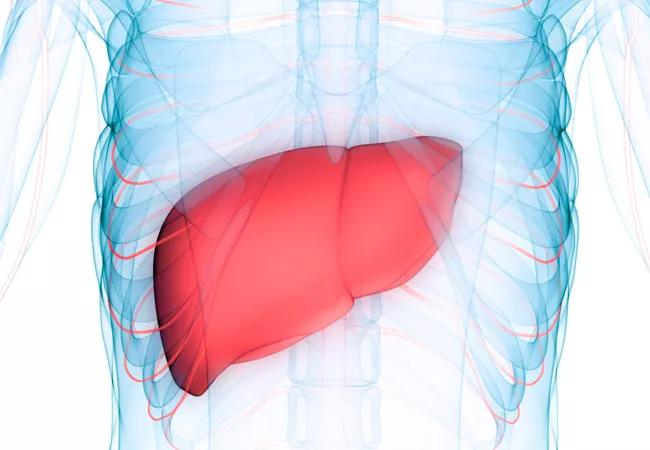Surgical advances and antiviral agents deepen donor pool

Transplant centers worldwide struggle with the same challenge — too few donor organs for patients in need. Nearly 107,000 individuals are currently on the national transplant waiting list, and most are in need of a kidney or liver transplant.
Cleveland Clinic is a non-profit academic medical center. Advertising on our site helps support our mission. We do not endorse non-Cleveland Clinic products or services. Policy
Cleveland Clinic Florida’s Transplant Center, established less than a decade ago, has pushed hard to increase access to organ transplantation in Florida. Part of that process includes expanding the organ donor pool wherever possible.
Living kidney donation has been possible for many years and is considered a better option than deceased donation. It allows transplantation before a patient gets too sick, when there is a higher chance of complications. It also provides the added benefit of allowing a deceased organ donation to go to another person in need.
“Technical advances and refinements of the donor procedure have made kidney donation less painful and more aesthetically appealing, which may factor into a person’s decision to donate,” explains Antonio Pinna, MD, Director of the Abdominal Transplant Center and the Living Donor Liver Transplant Program at Cleveland Clinic Florida.
Instead of a back incision to retrieve the kidney, transplant surgeons at Cleveland Clinic Florida use a laparoscopic nephrectomy approach through a c-section like incision. This often allows donors to go home 48 hours after surgery.
Pediatric en bloc kidney transplantation, another approach to increasing access to organ transplant, was bolstered in 2019 by the Organ Procurement and Transplantation Network with the implementation of a new policy to improve allocation of en bloc kidneys and set national standards for their transplantation.
Cleveland Clinic Florida is one of a handful of centers in Florida that performs this highly complex surgery, which involves implanting two pediatric kidneys into an adult patient and reconstructing two ureters. Cleveland Clinic Florida has performed approximately 65 of these transplants since first launching a kidney transplant program in 2013.
“Where a single pediatric kidney may be too small to support an adult recipient, we can achieve sufficient renal function by transplanting both pediatric kidneys,” says Neerja Agrawal, MD, Medical Director of Transplant Nephrology and Director of the Living Donor Kidney Transplant Program at Cleveland Clinic Florida. “Matching the deceased donor to recipient by size is critical for the success of this procedure, and it requires following the patient closely, as full function may take time to establish.”
In recent years, living donation has been pursued for liver transplantation, further broadening the organ donor pool. Despite a drop in living organ donation in 2020, due to the COVID pandemic, 491 living liver transplantations were performed in the United States. Most of these surgeries involved removing the right side of the liver from the donor.
New technology has helped to advance the surgical procedure for living liver donation, and a few centers, including Cleveland Clinic’s transplant programs in Ohio, Florida and Abu Dhabi (UAE), have shifted to removing the left lobe of the donor’s liver, when appropriate. While a smaller segment of the organ, it presents less risk for complications and a shorter recovery for the donor.
“About half of living donor liver transplants performed across the Cleveland Clinic system now involve the left lobe,” adds Dr. Pinna, noting that Cleveland Clinic Florida’s abdominal transplant team completed its first living liver transplant in 2021.
Another avenue to expand transplant availability is to bring previously deemed unviable organs into the donor pool. In 2018, after spending a year developing a carefully outlined protocol, Cleveland Clinic began offering transplant candidates negative for hepatitis C the option of receiving HCV-infected organs.
“We found that the antiviral agents had no negative interactions with anti-rejection medications, allowing us to eliminate the virus in the transplant recipient,” says Bobby Zervos, DO, MBA, Medical Director of Cleveland Clinic Florida’s Liver Disease Program. “Today our Florida team has performed almost 200 transplants using either HCV antibody positive or HCV RNA positive organs for HCV negative recipients.”
More recently, infectious disease and kidney transplant specialists at Cleveland Clinic in Ohio have successfully implanted healthy kidneys from deceased donors infected with SARS-CoV-2, as described in the American Journal of Transplantation.
As the only effective treatment for end-stage liver disease and the best treatment option for end-stage kidney disease, it is important for patients to be referred to a transplant center early when they would most benefit from organ transplant.
“We know that patients who receive a kidney transplant before they start dialysis have better long-term results,” Dr. Agrawal notes. “Unfortunately, many patients with chronic kidney disease believe they need to be on dialysis to be eligible for a transplant, which is definitely not the case.”